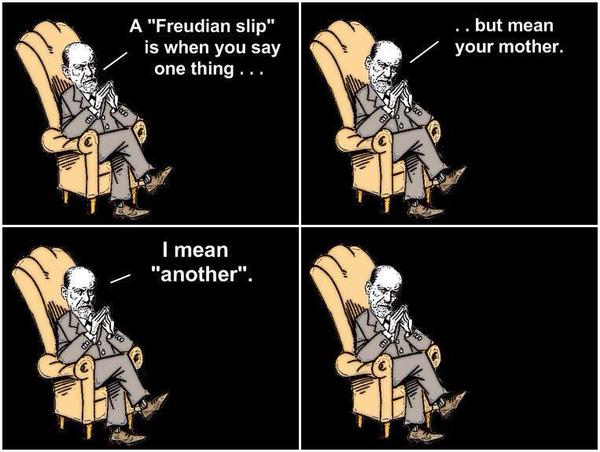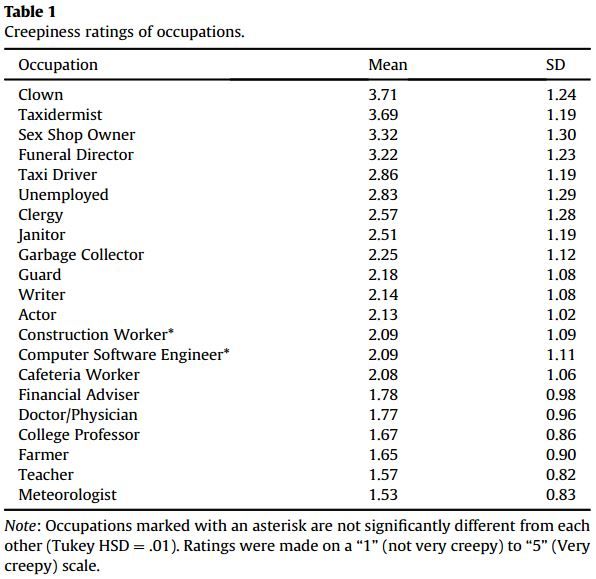The Psychology Of Creepiness
Creepiness ratings by occupation.
Clowns… of course, are at the very top.
What does it mean to be creepy? We recently looked at cartoon illustrations. Now let’s look at the science of creepiness. Francis T. McAndrew and Sara S. Koehnke of Knox College recently published an article on the subject in New Ideas in Psychology. They define creepiness as not obvious danger, but the ambiguity of danger:
A mugger who points a gun in your face and demands money is certainly threatening and terrifying. Yet, most people would probably not use the word “creepy” to describe this situation. It is our belief that creepiness is anxiety aroused by the ambiguity of whether there is something to fear or not and/or by the ambiguity of the precise nature of the threat (e.g., sexual, physical violence, contamination, etc) that might be present. Such uncertainty results in a paralysis as to how one should respond. In the mugging situation, there is no ambiguity about the presence or nature of threat.
You know what the stranger pointing a knife at you wants. But you aren’t sure about the guy at work who touches you just a bit too much. In modern civilized life, you can’t simply punch him. But neither can you ignore what’s going on. You don’t know how to respond, which is the core problem in creepiness:
It would be considered rude and embarrassing to run away from an odd person who has done nothing overtly threatening, but, on the other hand, it could be perilous to ignore your intuition and remain in an interaction that is dangerous. This ambivalence leaves you frozen in place, wallowing in unease.



